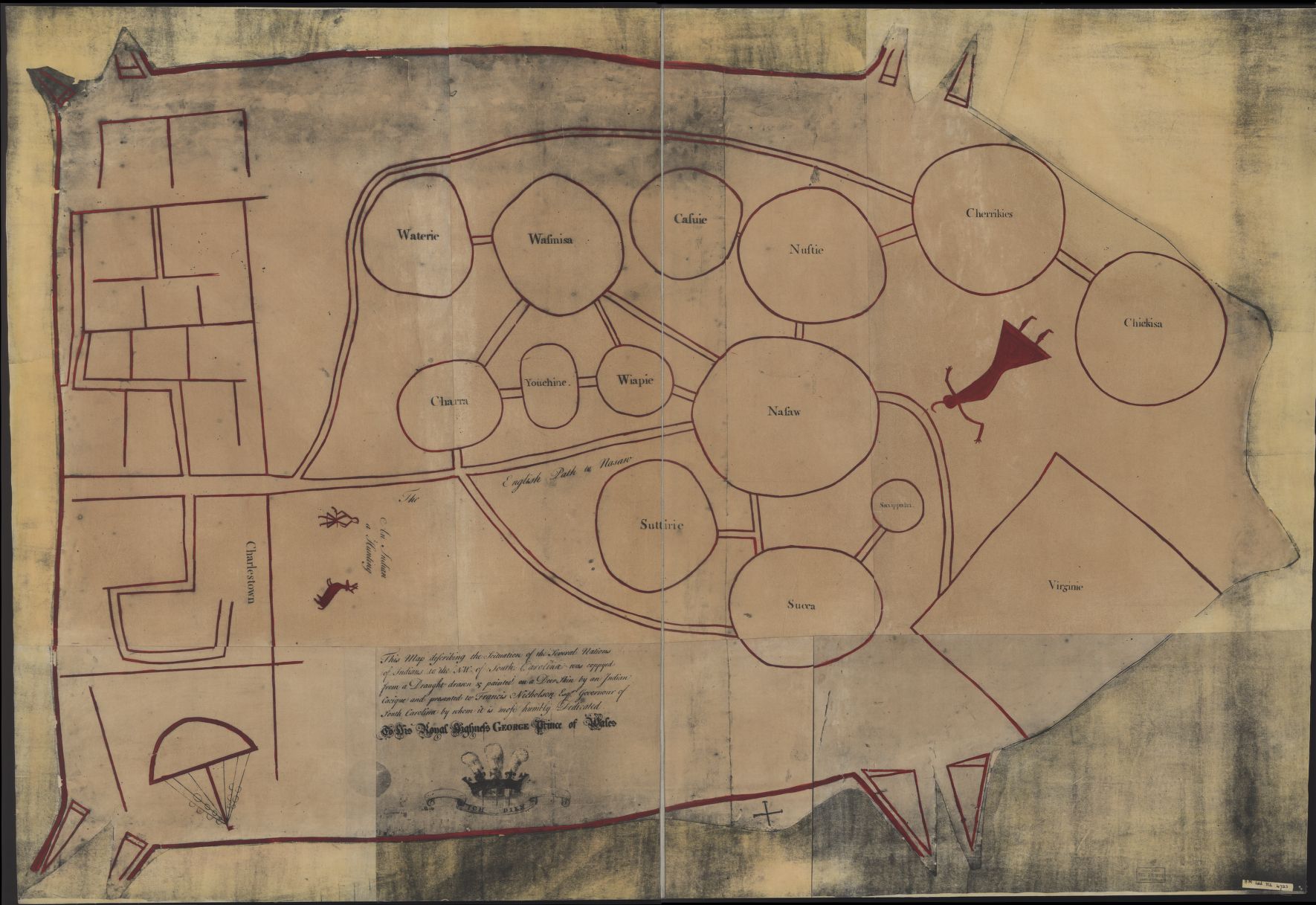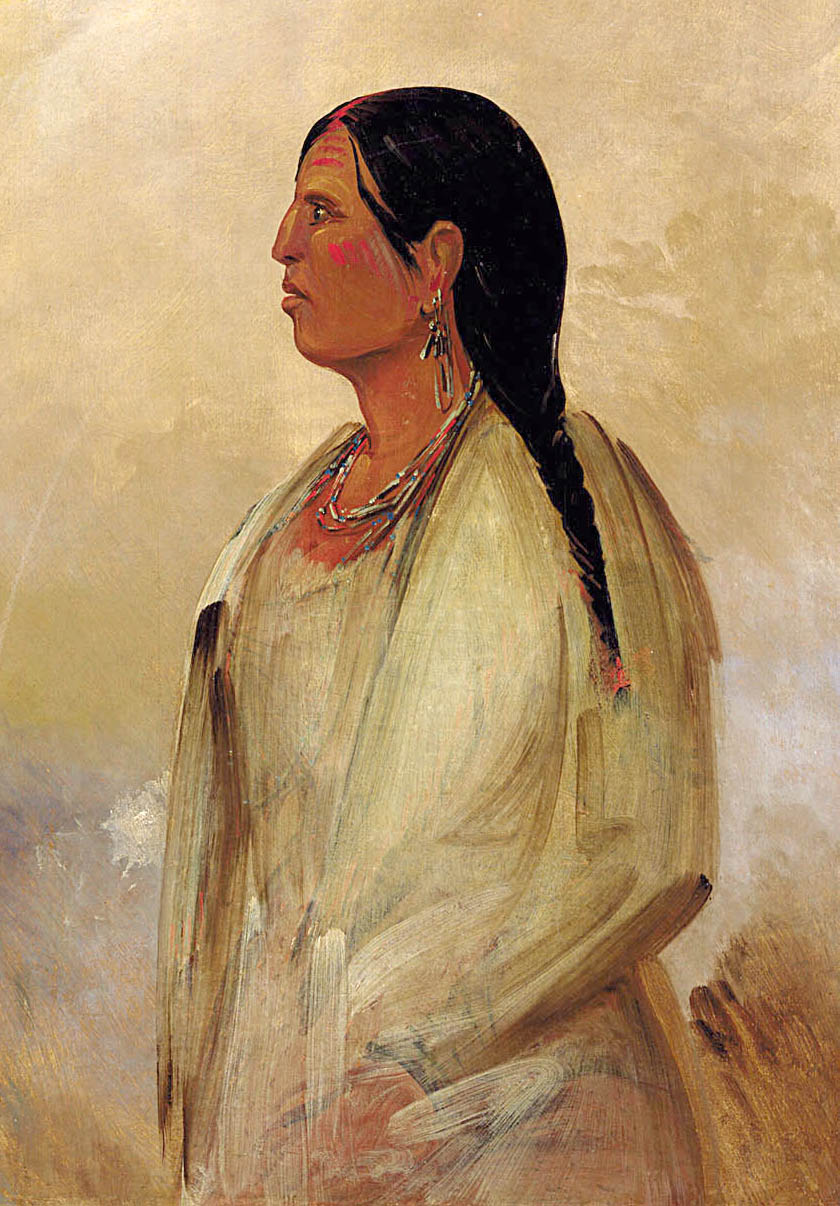|
Shakori
The Shakori were an Indigenous people of the Southeastern Woodlands. They were thought to be a Siouan people, closely allied with other nearby tribes such as the Eno and the Sissipahaw. As their name is also recorded as Shaccoree, they may be the same as the Sugaree, as both are Catawba people. Yardley in 1654 wrote about a Tuscarora guide's accounts of the ''Cacores'' people from ''Haynoke'' who, although smaller in stature and number, were able to evade the Tuscarora. Their villages were located around what is now Hillsborough, North Carolina along the banks of the Eno and Shocco rivers. Culture Although little is known about the Shakori, at the time of contact, they were not noted as being noticeably different from the surrounding tribes. They made their wigwams and other structures out of interwoven saplings and sticks; these were covered in mud as opposed to the bark typically used by other nearby tribes. They were described as being similar to traditional dwellings ... [...More Info...] [...Related Items...] OR: [Wikipedia] [Google] [Baidu] |
Eno (people)
The Eno or Enoke, also called Stuckenock, was an American Indian tribe located in North Carolina during the 17th and 18th centuries that was later absorbed into the Catawba tribe in South Carolina along with various other smaller tribal bands. Name While the exact meaning of the Eno people's name is unknown, the anthropologist Frank Speck suggested the synonym ''Haynokes'', as recorded by Francis Yeardley in 1654, could relate the meaning to ''i'nare'', "to dislike" or ''yeⁿni'nare'', "people disliked". Linguist Blair A. Rudes later alternatively proposed that Eno derives from ''ènu'', the Catawba word for "little crow". History The Enos were first mentioned in historic documents by William Strachey (the first secretary of the colony of Virginia) in his early-17th century book ''The Historie of Travaile Into Virginia Britannia''. Strachey mentions the "Anoeg" to the southwest of the Powhatan Confederacy (centered near present-day Richmond, Virginia) "whose howses are buil ... [...More Info...] [...Related Items...] OR: [Wikipedia] [Google] [Baidu] |
Sissipahaw
The Sissipahaw or Haw were a Native American tribe of North Carolina. Their settlements were generally located in the vicinity of modern-day Saxapahaw, North Carolina on the Haw River in Alamance County upstream from Cape Fear. They were possibly first recorded by the Spaniard Vendera in the 16th century as the ''Sauxpa'' in South Carolina. Their last mention in history is that the tribe joined the Yamasee against the English colonists in the Yamasee War of 1715. Some scholars speculate that they may have been a branch of the Shakori due to being so closely associated with that tribe but others disagree. Name The meaning of ''sissipahaw'' is unknown but it probably derives from a Siouan language. Colonel John Barnwell reported in a letter that the Sissipahaw were called Shacioes by some during the Tuscarora War. Linguist Ives Goddard proposed that this may be the Sissipahaw's endonym, but he acknowledged that it was impossible to ascertain how Barnwell originally spelled the ter ... [...More Info...] [...Related Items...] OR: [Wikipedia] [Google] [Baidu] |
Indigenous People Of The Southeastern Woodlands
Indigenous peoples of the Southeastern Woodlands, Southeastern cultures, or Southeast Indians are an ethnographic classification for Native Americans who have traditionally inhabited the area now part of the Southeastern United States and the northeastern border of Mexico, that share common cultural traits. This classification is a part of the Eastern Woodlands. The concept of a southeastern cultural region was developed by anthropologists, beginning with Otis Mason and Franz Boas in 1887. The boundaries of the region are defined more by shared cultural traits than by geographic distinctions.Jackson and Fogelson 3 Because the cultures gradually instead of abruptly shift into Plains, Prairie, or Northeastern Woodlands cultures, scholars do not always agree on the exact limits of the Southeastern Woodland culture region. Shawnee, Powhatan, Waco, Tawakoni, Tonkawa, Karankawa, Quapaw, and Mosopelea are usually seen as marginally southeastern and their traditional lands represen ... [...More Info...] [...Related Items...] OR: [Wikipedia] [Google] [Baidu] |
Catawba People
The Catawba, also known as Issa, Essa or Iswä but most commonly ''Iswa'' ( Catawba: ), are a federally recognized tribe of Native Americans, known as the Catawba Indian Nation. Their current lands are in South Carolina, on the Catawba River, near the city of Rock Hill. Their territory once extended into North Carolina, as well, and they still have legal claim to some parcels of land in that state. They were once considered one of the most powerful Southeastern tribes in the Carolina Piedmont, as well as one of the most powerful tribes in the South as a whole, with other, smaller tribes merging into the Catawba as their post-contact numbers dwindled due to the effects of colonization on the region. The Catawba were among the East Coast tribes who made selective alliances with some of the early European colonists, when these colonists agreed to help them in their ongoing conflicts with other tribes. These were primarily the tribes of different language families: the Iroquo ... [...More Info...] [...Related Items...] OR: [Wikipedia] [Google] [Baidu] |
Haliwa-Saponi
The Haliwa-Saponi Indian Tribe, also the Haliwa-Saponi Tribe, is a state-recognized tribe in North Carolina. They are not federally recognized as a Native American tribe. They are headquartered in Hollister, North Carolina. Formerly named the Haliwarnash Indian Club, they adopted their current form of government in 1953 and were recognized in 1965 by the state of North Carolina. The tribe has created schools and other institutions to preserve its culture and identity. They primarily belong to Protestant Christian churches, mostly Baptist and Methodist. Name The name ''Haliwa'' is a portmanteau from the two counties: Halifax and Warren. In 1979 the tribe added ''Saponi'' to their name to reflect their descent from the historical Saponi peoples, part of the large Siouan languages family, who were formerly located in the Piedmont of present-day Virginia and the Carolinas. Membership The Haliwa-Saponi comprise slightly more than 3,800 members. About 80 percent of tribal membe ... [...More Info...] [...Related Items...] OR: [Wikipedia] [Google] [Baidu] |
Eno River
The Eno River, named for the Eno Native Americans who once lived along its banks, is the initial tributary of the Neuse River in North Carolina, United States. Descendants of European immigrants settled along the Eno River in the latter 1740s and early 1750s, including many Quakers from Pennsylvania. Several years after the 1752 creation of Orange County, the Orange County Court of Common Pleas & Quarter Sessions selected a site along the Eno River near the homes of James Watson and William Reed as the county seat, originally naming it ''Corbin Town'', or ''Corbinton,'' after Francis Corbin, agent and attorney to John, Earl Granville. The Court met at James Watson's home along the Eno River from 1754 through 1756, when the courthouse at Corbinton was completed. In 1759, officials changed the county seat's name from ''Corbinton'' to ''Childsburg,'' after another of Earl Granville's agents, Thomas Child. Finally, in 1766, officials changed the name to '' Hillsborough.'' The Eno ... [...More Info...] [...Related Items...] OR: [Wikipedia] [Google] [Baidu] |
Siouan Languages
Siouan ( ), also known as Siouan–Catawban ( ), is a language family of North America located primarily in the Great Plains, Ohio and Mississippi valleys and southeastern North America with a few other languages in the east. Name Authors who call the entire family ''Siouan'' distinguish the two branches as Western Siouan and Eastern Siouan or as "Siouan-proper" and "Catawban". Others restrict the name "Siouan" to the western branch and use the name ''Siouan–Catawban'' for the entire family. Generally, however, the name "Siouan" is used without distinction. Family division The Siouan family consists of some 20 languages and various dialects: * Siouan ** Western Siouan *** Mandan **** Nuptare **** Nuetare *** Missouri River Siouan (a.k.a. Crow–Hidatsa) **** Crow (a.k.a. Absaroka, Apsaroka, Apsaalooke, Upsaroka) – 3,500 speakers **** Hidatsa (a.k.a. Minitari, Minnetaree) – 200 speakers *** Mississippi Valley Siouan (a.k.a. Central Siouan) **** Mitchigamea? **** ... [...More Info...] [...Related Items...] OR: [Wikipedia] [Google] [Baidu] |
Extinct Native American Peoples
Extinction is the termination of an organism by the death of its last member. A taxon may become functionally extinct before the death of its last member if it loses the capacity to reproduce and recover. As a species' potential range may be very large, determining this moment is difficult, and is usually done retrospectively. This difficulty leads to phenomena such as Lazarus taxa, where a species presumed extinct abruptly "reappears" (typically in the fossil record) after a period of apparent absence. Over five billion species are estimated to have died out. It is estimated that there are currently around 8.7 million species of eukaryotes globally, possibly many times more if microorganisms are included. Notable extinct animal species include non-avian dinosaurs, saber-toothed cats, and mammoths. Through evolution, species arise through the process of speciation. Species become extinct when they are no longer able to survive in changing conditions or against superior ... [...More Info...] [...Related Items...] OR: [Wikipedia] [Google] [Baidu] |
Saponi
The Saponi are a Native American tribe historically based in the Piedmont of North Carolina and Virginia.Raymond D. DeMaillie, "Tutelo and Neighboring Groups," pages 286–87. They spoke a Siouan language, related to the languages of the Tutelo, Biloxi, and Ofo. They were part of the Monacan confederacies. Saponi, Tutelo, and Yesang were collectively called the Nahyssan.Jay Hansford C. Vest, ''An Odyssey among the Iroquois'', 124. The Cayuga adopted the Saponi into the League of the Haudenosaunee in 1753. Name The origin and meaning of ''Saponi'', sometimes spelled Sappony, is debated. American anthropologist John Reed Swanton wrote that Saponi was "a corruption of Monasiccapano or Monasukapanough."John Reed Swanton, ''The Indian Tribes of North America'', 71. He wrote the name came from ''moni-seep'' meaning "shallow water." University of Kansas linguist Robert L. Rankin also suggested that their name derived from ''sa:p moni'' meaning "shallow water" or ''sa:p oni:' ... [...More Info...] [...Related Items...] OR: [Wikipedia] [Google] [Baidu] |






